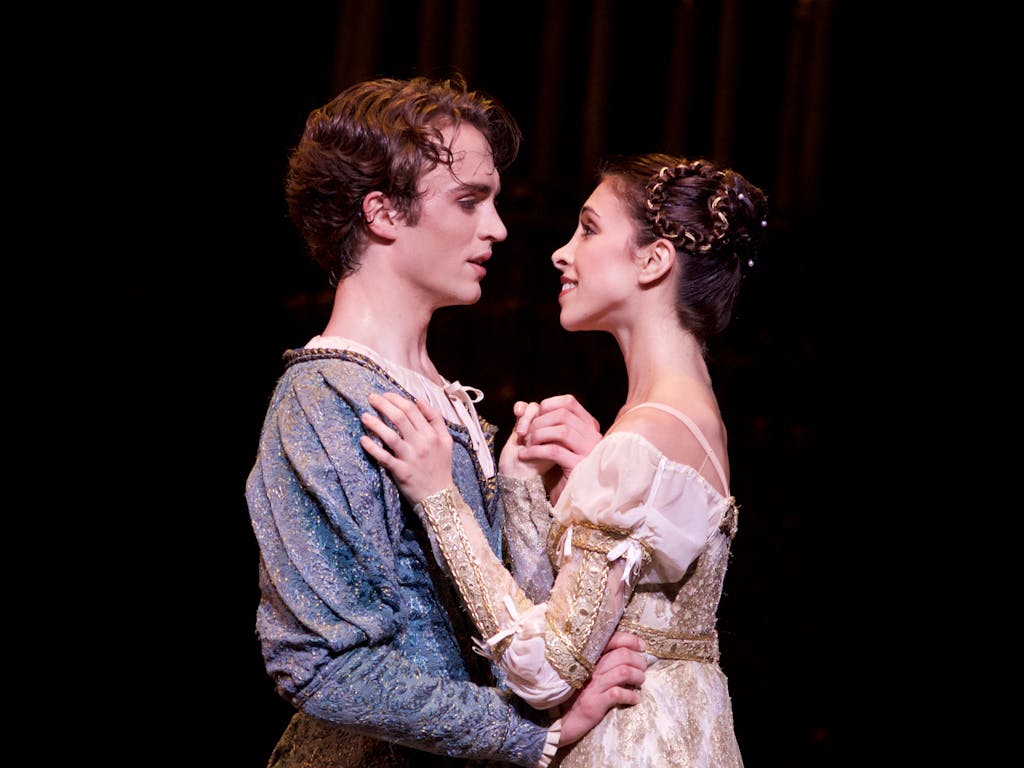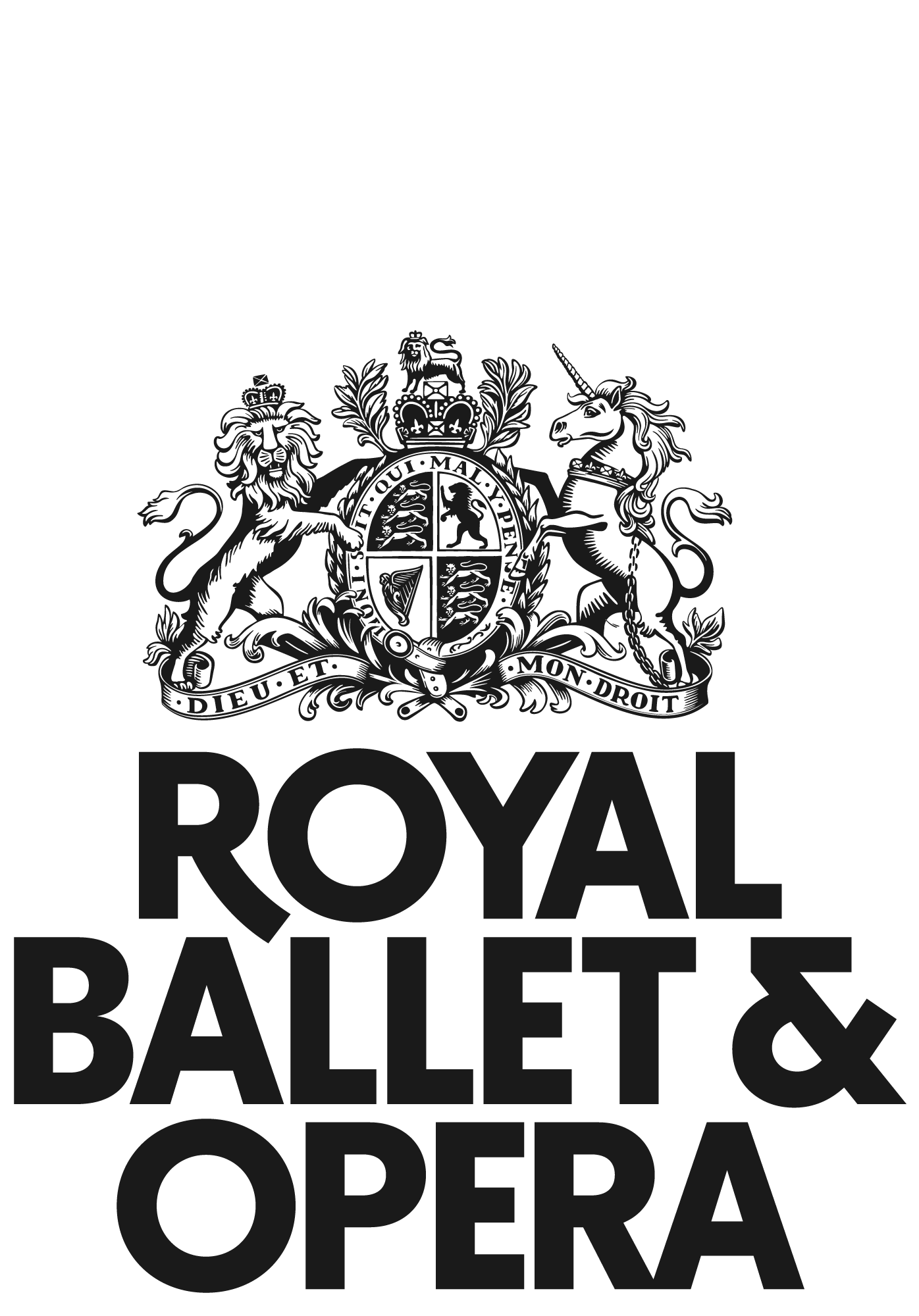Ballet Essentials: Romeo and Juliet
The greatest love story ever told – through ballet.
An ancient family feud casts a long shadow over the town of Verona. In this hothouse of tension, brawls are quick to break out and both sides get caught in the crossfire. When Romeo and Juliet – two young members of the warring Montague and Capulet families – fall in love, they learn that they must risk it all to be together.
Shakespeare’s famous love story is transformed into a mesmerising ballet by Royal Ballet Principal Choreographer Kenneth MacMillan. Romantic, passionate and devastating, Romeo and Juliet is a signature work of The Royal Ballet repertory.
Quick Facts
What is Romeo and Juliet about?
Romeo and Juliet is about two young lovers caught in the crossfire of a family feud between the Montagues and Capulets. Can their love survive against a backdrop of hatred and hostility?
Who choreographed Romeo and Juliet?
Romeo and Juliet was choreographed in 1965 by Kenneth MacMillan, The Royal Ballet’s Principal Choreographer.
Who composed the music for Romeo and Juliet?
The Romeo and Juliet score is composed by Russian composer Sergey Prokofiev.
How long is Romeo and Juliet?
The performance of Romeo and Juliet in the theatre lasts approximately 2 hours 55 minutes, including two intervals.
What is the famous pas de deux in Romeo and Juliet?
The most famous pas de deux in the ballet Romeo and Juliet is the Balcony pas de deux at the end of Act I. Romeo and Juliet meet at the balcony after having fallen in love at the ball and fervently profess their love to each other. MacMillan transforms Shakespeare’s love scene – where the famous ‘wherefore art thou, Romeo?’ line comes from – into an impassioned duet full of sweeping lifts and expansive jumps, depicting the ardent love between the young couple.
Character List
Romeo – A young man from the Montague family who is in love with Rosaline, until he meets Juliet.
Juliet – A young woman from the Capulet family who seems destined to marry Paris, a young nobleman.
Mercutio – Romeo’s closest friend, Mercutio is a dreamer and a romantic.
Tybalt – A Capulet, Juliet’s cousin is an angry young man, eager to defend his family’s honour and fight the Montagues.
Benvolio – A Montague, and close friend of Romeo and Mercutio.
Paris – A nobleman who Juliet’s parents think she should marry.
Lord and Lady Capulet – Juliet’s protective parents who want to see their daughter happily married to a good match – not to a Montague!
Escalus, Prince of Verona – The ruler of the city and its peacekeeper. Neither a Capulet nor a Montague, the Prince is weary of the feud between the two families.
Nurse – Juliet’s nurse has known her since she was born. She knows Juliet better than her parents, and becomes a trusted messenger and go-between.
Friar Laurence – A reclusive friar, and confidante of Romeo, who helps to marry the lovers. Juliet turns to him for help.
Gallery
Romeo and Juliet Synopsis
The Capulets and Montagues are sworn enemies. A fight breaks out in the marketplace led by Romeo Montague and his friends Mercutio and Benvolio against Tybalt, Lord Capulet’s nephew, and other members of the Capulet house. The Prince of Verona commands the families to end their feud. Lord and Lady Capulet introduce their daughter Juliet to Paris, a nobleman they intend her to marry. In disguise, Romeo, Mercutio and Benvolio sneak into a ball at the Capulets’ house. Romeo and Juliet are taken with each other. Later, when Juliet is on her balcony, Romeo appears below and they profess their love.
Juliet’s nurse delivers a letter to Romeo in which Juliet says she will be his wife. The lovers are secretly married by Friar Laurence. In the market place, Tybalt fights Mercutio and kills him. Romeo avenges the death of his friend and is punished with immediate exile from Verona.
Secretly, Romeo has been with Juliet through the night. In the morning, Romeo embraces Juliet and escapes as her parents enter with Paris. Juliet refuses to marry Paris, and her parents threaten to disown her. Juliet rushes to beg Friar Laurence’s help. He gives her a potion that will make her fall temporarily into a deathlike sleep. Juliet agrees to marry Paris but the next morning her parents find her apparently lifeless. Romeo, who has not received the Friar’s warning message about the subterfuge, returns to Verona at the news of Juliet’s death. In the Capulet tomb, he believes Juliet to be dead and drinks poison. Juliet awakes, finds Romeo dead, and stabs herself.
History
For Romeo and Juliet, Kenneth MacMillan took inspiration from Shakespeare’s 1597 play. The story is universally appealing: at its heart it is about the blossoming of first love, but it has a darker message – about the pointless violence that grows out of prejudice and hatred – that still resonates in the world today.
As such, Shakespeare’s play has provided rich and fertile ground for translation into other mediums – from film adaptations by Franco Zeffirelli and Baz Luhrmann to musical reimaginations such as West Side Story and & Juliet. In the world of dance, Shakespeare’s famous love story inspired many ballets including Kenneth MacMillan’s 1965 Royal Ballet production, Frederick Ashton’s 1955 Royal Danish Ballet production and John Cranko’s 1962 production for Stuttgart Ballet.
The first ballet adaptation of Romeo and Juliet can be dated back to 1935 at the Kirov (now Mariinsky) Theatre in Leningrad (now Saint Petersburg). Composer Sergey Prokofiev created a score to accompany a scenario for a ballet by Russian dramaturg Adrian Piotrovksy. This early ballet version of Romeo and Juliet wasn’t performed until 1938 in Brno, with choreography by Ivo Váňa-Psota. Earlier it had been deemed ‘undanceable’ and had provoked controversy due to its initial happy ending. The ballet, which follows the Russian tradition of drambalet or dramatised ballet (for example Spartacus or The Flames of Paris), was later significantly revised by choreographer Leonid Lavrovksy. This revised version premiered in 1940 at the Kirov Theatre, danced by the Bolshoi Ballet with Galina Ulanova and Konstantin Sergeyev in the title roles.
When the Bolshoi Ballet first brought Leonid Lavrovsky’s Romeo and Juliet to the Royal Opera House, Covent Garden, in 1956, British audiences were astounded by the ballet’s power. Ninette de Valois, founder of The Royal Ballet, decided that the Company should have in its repertory its own full-length Romeo and Juliet: Shakespeare was Britain’s greatest playwright, and the 400th anniversary of his birth would be celebrated nationwide in 1964. De Valois negotiated with the Soviet authorities to bring the Lavrovsky production to The Royal Ballet but to no avail. She then tried to persuade Frederick Ashton to stage the Romeo and Juliet he had choreographed for Royal Danish Ballet, but he was reluctant to remount it in London for fear of comparison with the massive Russian production. And so, Kenneth MacMillan was given the chance to create his first three-act ballet – with less than five months to deliver it.
MacMillan had already been thinking about creating his own version of the ballet to Prokofiev’s music. When requested by the ballerina Lynn Seymour to create a short duet for Canadian television, broadcast for herself and her partner Christopher Gable, he swiftly choreographed what would later become the Balcony pas de deux. Together with Seymour and Gable, MacMillan worked on the full ballet; the three would listen to Prokofiev’s score while reading and rereading the play. Seymour and Gable contributed to the choreographic process, and it was a given in everyone’s minds that they would perform the lead roles. It was thus a shock to everyone when Margot Fonteyn and Rudolf Nureyev were announced as the first-cast; Sol Hurok, the organiser of The Royal Ballet’s American tours, insisted on the famous pairing to sell an upcoming international tour. MacMillan protested this in vain but Hurok came out victorious: the premiere on 9 February 1965 saw Fonteyn and Nureyev in the title roles.
The Music
When Adrian Piortrovsky suggested Romeo and Juliet as the subject of a score to Prokofiev in December 1934, the Russian composer had already had several ballet scores under his belt. Prokofiev has already worked on several ballets for Diaghilev’s Ballets Russes, including 1921’s Chout and 1929’s Prodigal Son, and through which he could flex his compositional muscles and forge his musical personality. Prokofiev would go on to compose the score for Romeo and Juliet in the summer of 1935 (though several additions were later made in 1939 for the Kirov premiere of the ballet). MacMillan’s and later choreographers’ balletic adaptations of Shakespeare’s play would make use of the same rousing score from Prokofiev.
For Romeo and Juliet and his many other works, Prokofiev would come to be considered one of the giants of 20th-century classical music. He was born on 27 April 1891, and trained in the St Petersburg Conservatory, following encouragement by the composer Alexander Glazunov to apply there. He fled Russia following the 1917 Revolution but returned in 1936. Other celebrated Prokofiev works include his score for Cinderella and Peter and the Wolf; his opera The Fiery Angel; and his Fifth Symphony, Third Piano Concerto and Second Violin Concerto, which continue to be performed by symphony orchestras around the world. He died on 5 March 1953.
One of Prokofiev’s most familiar phrases of music is, of course, the Dance of the Knights from Romeo and Juliet. A swelling piece of orchestral music – layers of strings, horns and woodwinds come together to create a sense of immense scale – the tune first appears in Act I, when the audience is introduced to the Capulets at the Capulet ball. Outside the realm of ballet and classical music, the Dance of the Knights has continued to capture audiences in popular culture – most notably, it has been used as the theme tune for the TV series The Apprentice and has been sampled by hip-hop group A Tribe Called Quest in their song Can I Kick It?
The Choreography
While earlier versions of the Romeo and Juliet ballet can be attributed to Ivo Váňa-Psota and Leonid Lavrovsky, it is Kenneth MacMillan’s choreography that is most widely performed today.
Romeo and Juliet was MacMillan’s first full-length work. Even so, it showcased what would become the hallmarks of a MacMillan ballet.
Through the dramatic ensemble scenes in Act I and II, MacMillan’s choreography animated the ballet with vivacity and colour, bringing Renaissance Verona to life. The Dance of the Knights demonstrates the imposing, courtly dignity of the Capulets at the ball; while busy street markets that quickly burst into suspenseful sword fighting capture a Verona teeming with tension and unease.
MacMillan also choreographed compelling solos and pas de deux that not only challenged the leading dancers technically but brought out the rich emotional interiors of their characters. Through moments such as the Balcony pas de deux, the eager, naive youthfulness and unquestioned devotion between the leads are given full force.
Watch now

Watch on stage
Shakespeare’s timeless tale of star-crossed lovers is transformed in Kenneth MacMillan’s ‘mesmerising’ (Telegraph) ballet.

Watch on Stream
Kenneth MacMillan's timeless love story, starring Anna Rose O'Sullivan and Marcelino Sambé.
Royal Opera House Covent Garden Foundation, a charitable company limited by guarantee incorporated in England and Wales (Company number 480523) Charity Registered (Number 211775)





